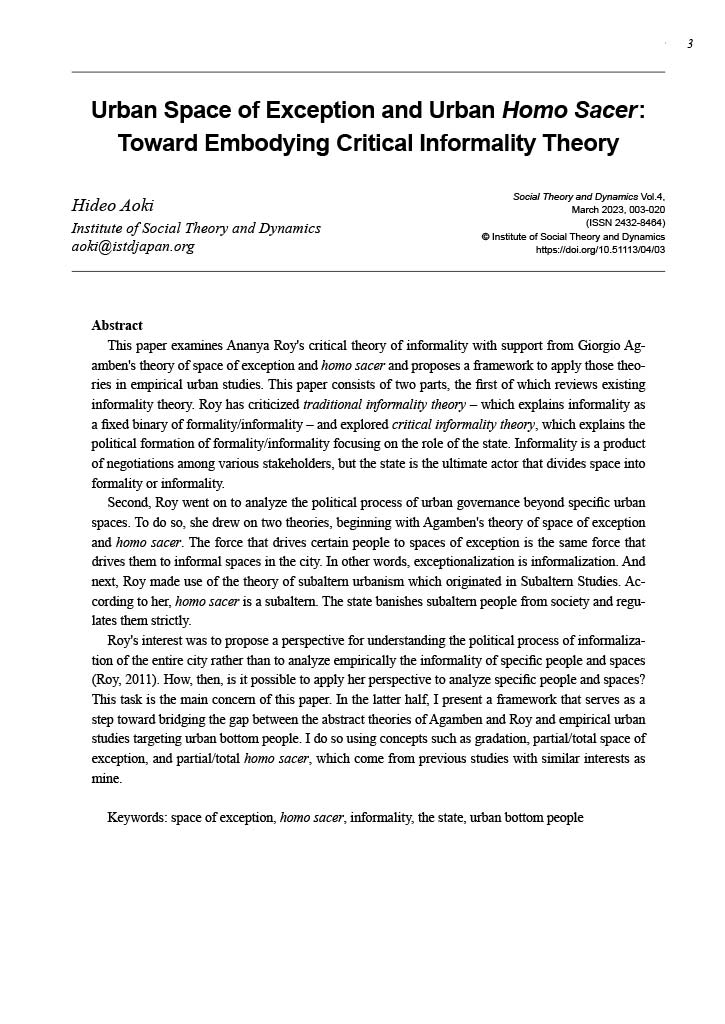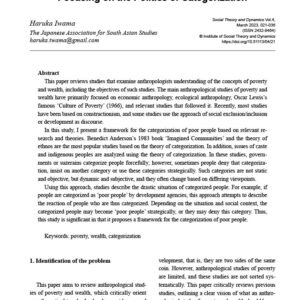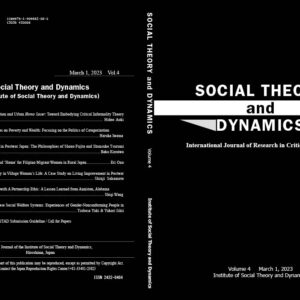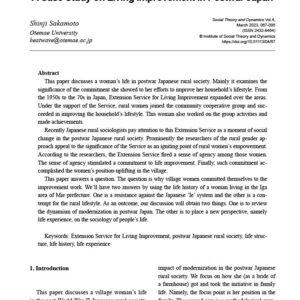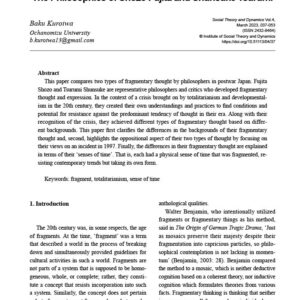Description
This paper examines Ananya Roy’s critical theory of informality with support from Giorgio Agamben’s theory of space of exception and homo sacer and proposes a framework to apply those theories in empirical urban studies. This paper consists of two parts, the first of which reviews existing informality theory. Roy has criticized traditional informality theory – which explains informality as a fixed binary of formality/informality – and explored critical informality theory, which explains the political formation of formality/informality focusing on the role of the state. Informality is a product of negotiations among various stakeholders, but the state is the ultimate actor that divides space into formality or informality.
Second, Roy went on to analyze the political process of urban governance beyond specific urban spaces. To do so, she drew on two theories, beginning with Agamben’s theory of space of exception and homo sacer. The force that drives certain people to spaces of exception is the same force that drives them to informal spaces in the city. In other words, exceptionalization is informalization. And next, Roy made use of the theory of subaltern urbanism which originated in Subaltern Studies. According to her, homo sacer is a subaltern. The state banishes subaltern people from society and regulates them strictly.
Roy’s interest was to propose a perspective for understanding the political process of informalization of the entire city rather than to analyze empirically the informality of specific people and spaces (Roy, 2011). How, then, is it possible to apply her perspective to analyze specific people and spaces? This task is the main concern of this paper. In the latter half, I present a framework that serves as a step toward bridging the gap between the abstract theories of Agamben and Roy and empirical urban studies targeting urban bottom people. I do so using concepts such as gradation, partial/total space of exception, and partial/total homo sacer, which come from previous studies with similar interests as mine.

